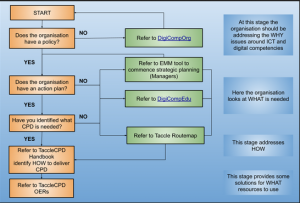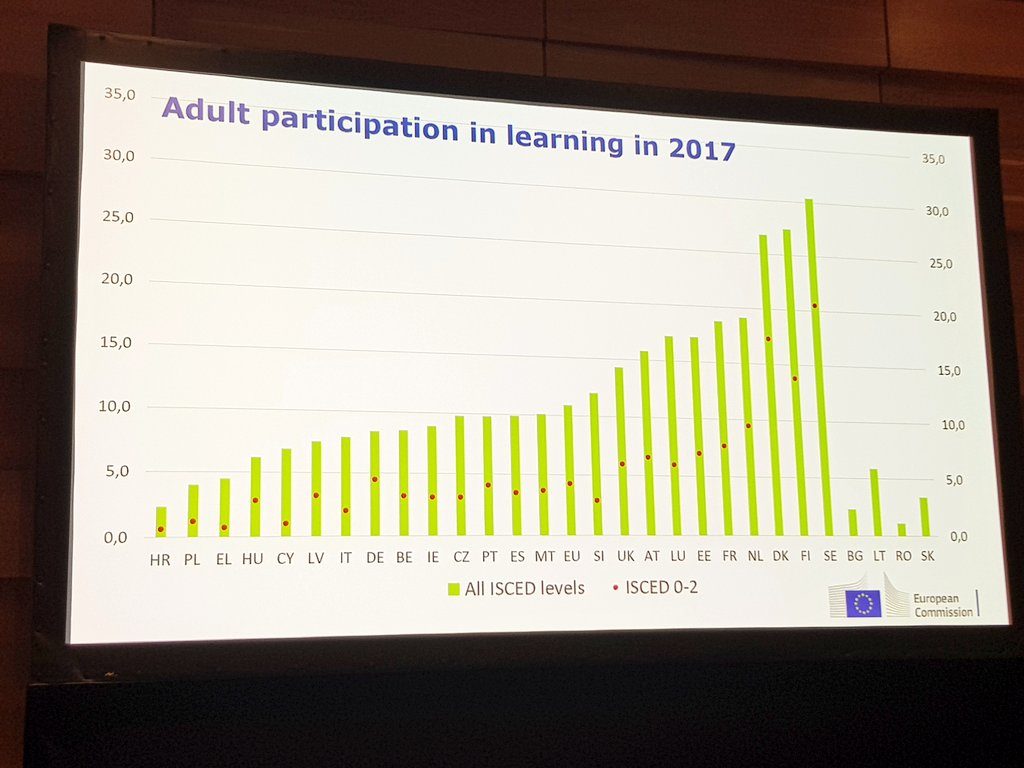Finding strategies to promote digital competences of teachers and trainers – Part Two: Adapting the Four-Step Model for vocational education and training
With my previous blog entry I started a series of posts with which I try to link my work in our EU-funded TACCLE4-CPD project (with focus on vocational education and training (VET)) to the work of other partners in other educational sectors (general education, adult education). As a starting point I presented the Four-Step Model of the TACCLE4-CPD project that was developed in the recent project meeting in Bucharest (in which I couldn’t participate). I found this model very helpful for finding and developing strategies to promote digital competences. However, my critical point was that it focused primarily on schools, adult education providers and (general) educational authorities. In this post I will discuss, how the model can be adapted to the field of VET. Below I will follow the steps and make some comments from the perspective of VET.
The starting point: The education and training contexts in the field of VET
As I have mentioned, the Four-Step Model has been developed to support school managers, adult education providers and educational authories – to promote the digital competences of teachers. When shifting the emphasis to the field of VET, it is essential to take into account education and training partnerships between vocational schools, enterprises and intermediate training centres. In such contexts the schools are contributing to the enhancement of digital competences together with the other partners. Moreover, the introduction of digital tools for learning is part of the enhancement of digital competences in the occupational domain.
Identifying policies: educational, occupational and wider societal perspectives
When discussing with my interviewees in the field of VET I have come to the conclusion that there are multiple policies that have an impact on promoting digital competences in the field of VET. In this context it is worthwhile to mention government policies at the national (federal), regional (federal state), sub-regional and municipal level. In addition there are public innovation policies and sectoral stakeholder -led initiatives as well as local partnership-oriented initiatives. From this perspective it is appropriate to look at the VET-specific policy constellations that are being followed.
Identifying strategic initiatives and shaping action plans
In addition to the above-mentioned diversity, it is worthwhile to consider, what kinds of strategic initiatives are available for enhancing digital competences in the field of VET. From the perspective of curriculum design/development it is possible to specify the following options:
- Introduction of vocational curricula to new occupational domains or reshaping the existing training with a new (whole curriculum) approach;
- Enrichment of existing vocational learning arrangements with integrative digital toolsets;
- Enrichment of particular vocational learning arrangements with domain-specific digital tools and web resources;
- Incorporation of simulated learning opportunities into workplace contexts that do not provide opportunities for on-the job training.
In the light of the above, the educational actors can have very different starting points and strategic options.
The role of a “Routemap” and a “TACCLE handbook” in the field of VET
Considering the above presented comments, it is appropriate to take a closer look at results of the interviews with teachers and trainers and with the working perspectives that they have outlined. Once this has been completed, it is possible to discuss, how these products can be adapted to the field of VET. In my next blog post I will take a first step towards interpreting the findings from my interviews in terms of ‘innovation paths’.
More blogs to come ...

 I am ever more interested in the issue of data literacy and agree very much with Javiera Atenas from the Open Education Working Group, London
I am ever more interested in the issue of data literacy and agree very much with Javiera Atenas from the Open Education Working Group, London 

